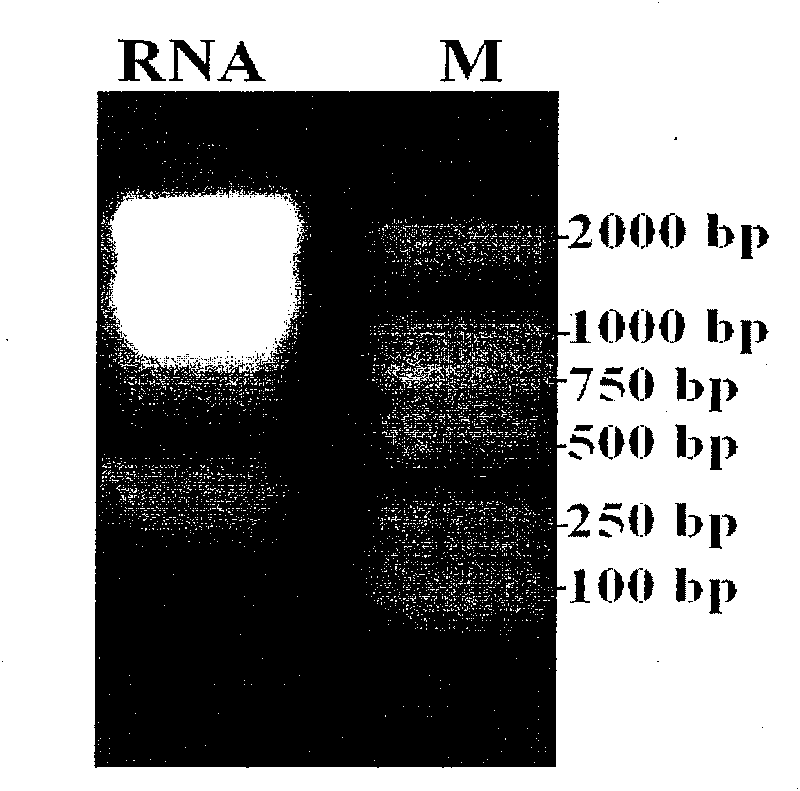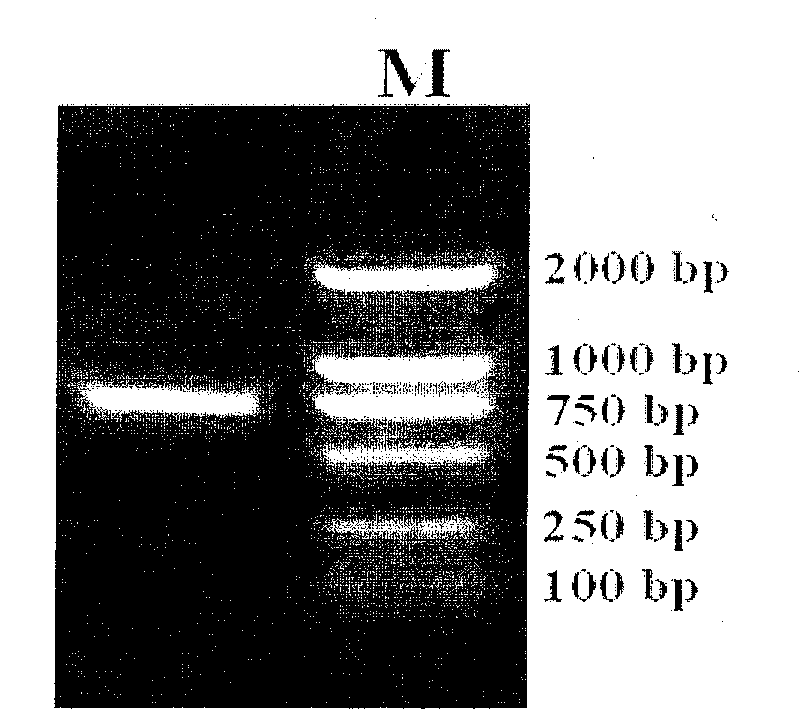Stress resistance ERF transcription factor gene derived from Brassica napus
A Brassica napus, transcription factor technology, applied in genetic engineering, plant gene improvement, peptide source, etc., can solve the problems of long time, ineffectiveness, complex conventional breeding of stress resistance genetic basis, etc.
- Summary
- Abstract
- Description
- Claims
- Application Information
AI Technical Summary
Problems solved by technology
Method used
Image
Examples
Embodiment 1
[0052] Example 1: RNA Extraction and cDNA Synthesis of Double Low Cabbage Type Rapeseed Huyou 15 Seedlings
[0053] (1) Test method:
[0054] 1. Extraction of RNA
[0055] Add 100mL extraction buffer (rape RNA extraction buffer formulation: CTAB 3% (W / V); PVP 3% (W / V) (Mw 4000); EDTA 25mM; NaCl 2.0M; Tris-HCl100mM, pH 8.0; Spermidine 0.5g / L; DEPC 0.1% (V / V); 0.1% DEPC-treated SDS 0.5% (W / V); 0.1% DEPC-treated LiCl 10M) into a 50mL polypropylene tube, preheated at 65°C;
[0056] Weigh 5g of plant material and pour it into liquid nitrogen to keep the material in a frozen and brittle state, and grind it;
[0057] After grinding, transfer the fine powder to a 50mL centrifuge tube with preheated extraction buffer at 65°C;
[0058] Place the centrifuge tube in a 65°C water bath for 45 minutes, and shake occasionally to mix the ingredients;
[0059] Add an equal volume of chloroform-isoamyl alcohol mixture, and mix gently up and down for about 10 minutes;
[0060] Centrifuge at ...
Embodiment 2
[0076] Example 2: PCR method to obtain the BnaERFB1-2-Hy15 gene fragment of Brassica napus stress-resistance-related transcription factor
[0077] (1) Test method:
[0078] In the present invention, a pair of primers (BnaERFB1-2-F and BnaERFB1-2-R) are designed, and BamHI and SacI enzyme cutting sites are respectively introduced at both ends of the primers for the needs of construction such as cloning identification.
[0079] PCR reaction system: 5.0 μL of 10×PCR buffer; 4 μL of dNTPs (each 2.5 mM); 1 μL (20 ng) of cDNA template of rape Huyou 15; primer BnaERFB1-2-F 0.5 μL; primer BnaERFB1-2-R 0.5 μL; Ex-Taq 0.4 μL (added after pre-denaturation); add sterile water to make up to 50 μL. PCR reaction program: Denaturation at 94°C for 30 s, annealing at 55°C for 30 s, extension at 72°C for 1 min, a total of 30 cycles of amplification, and extension at 72°C for 10 min.
[0080] (2) Test results:
[0081] Through 1.0% agarose gel electrophoresis, the amplified product is detected...
Embodiment 3
[0082] Embodiment 3: clone identification, sequence determination
[0083] (1) Test method:
[0084] The amplified fragment was recovered by DNA agarose gel recovery kit of Hangzhou Weitejie Biochemical Technology Co., Ltd., and then cloned into the pMD-18-Simple T vector of Dalian Bao Bioengineering Co., Ltd. for cloning identification and sequence determination.
[0085] The present invention finally obtains the BnaERFB1-2-Hy15 gene of the stress-resistance-related transcription factor BnaERFB1-2-Hy15 in Brassica napus through nucleotide sequence determination and analysis, which has the following base and amino acid sequence information.
[0086] (2) Test results:
[0087] Sequencing analysis results showed that the BnaERFB1-2-Hy15 gene coding reading frame of Brassica napus stress-resistance-related transcription factor consisted of 678bp, encoding a protein of 225 amino acids.
PUM
 Login to View More
Login to View More Abstract
Description
Claims
Application Information
 Login to View More
Login to View More - R&D
- Intellectual Property
- Life Sciences
- Materials
- Tech Scout
- Unparalleled Data Quality
- Higher Quality Content
- 60% Fewer Hallucinations
Browse by: Latest US Patents, China's latest patents, Technical Efficacy Thesaurus, Application Domain, Technology Topic, Popular Technical Reports.
© 2025 PatSnap. All rights reserved.Legal|Privacy policy|Modern Slavery Act Transparency Statement|Sitemap|About US| Contact US: help@patsnap.com


